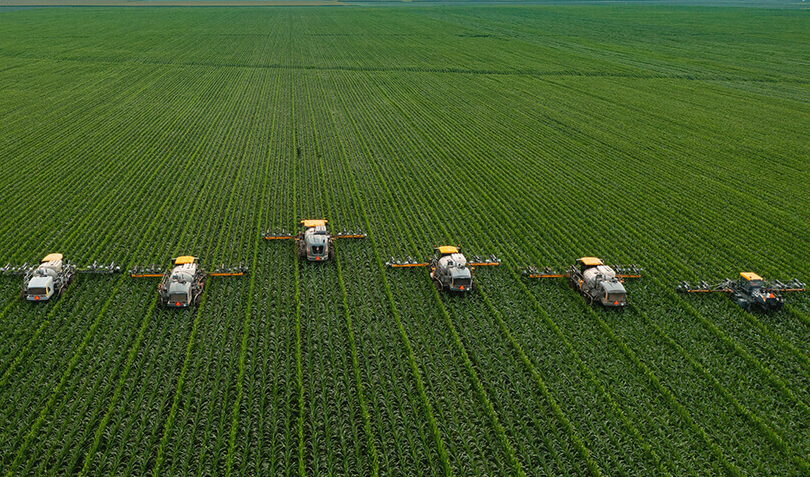What is meant by Tractor Assisted Driving Systems?
- Agriculture is undergoing a change as a result of tractor assisted driving systems (TADS), which enable farmers to manage expansive areas better. Farmers can operate their tractors from the comfort of the cab thanks to TADS, an automated system that employs GPS and satellite technologies to drive tractors across a field. They are getting more and more well-liked in the agriculture sector.
- They provide advantages, including heightened safety, enhanced effectiveness, and environmental sustainability. These technologies are used by farmers to control and manoeuvre their tractors in challenging terrain and to keep constant speeds. The tractor is a modified model of a typical agricultural tractor and is furnished with a number of sensors, including a GPS receiver and a camera. The technology is intended to help the robot navigate over difficult terrain.
Why are modern tractor Assisted Driving Systems required by farmers?
- The agriculture sector is being revolutionized by a technology called tractor assisted driving systems (TADS). In the agricultural sector, tractor-driving systems are becoming more and more common.
- With the help of these technologies, tractors may be run with little to no operator input, which lowers labour costs and boosts productivity. They enable safer, more effective, and more efficient agricultural and harvesting methods.
- TLDs are automated systems that direct tractors along pre-planned routes using technologies like computer vision, GPS, and others. The use of a tractor by farmers to automate tasks like tillage is considered agricultural equipment.
- Tractors are now often used by farmers for a variety of farm operations, such as planting crops, plough work, and soil tilling. The adaptability of contemporary tractors enables their usage in a range of settings, such as the distribution of fertilizer and the upkeep of grass and plants.
- The variety of duties that modern tractors are capable of performing has also been significantly expanded as a result of the use of the digital machinery and technology that SMAJAYU particularly developed for farming.
- No matter what the task at hand is—farming, gardening, or simply checking over your yard—you'll discover that operating a tractor makes quick work of it?
Make a move to a tractor assisted driving system to keep your farm modern:
- The operator of specialist tractors must exert a tremendous lot of effort in order to operate the tractor while also managing towing attachments during row-crop operations.
- The Advanced Driving System (ADS), a cutting-edge hybrid assisted driving system created by SMAJAYU to simplify orchard and vineyard operations, may assist you with all of your activities.
- Modern mechatronic technologies let the operator concentrate on operating the attachments while delegating driving duties to the machine at critical moments.
- The ability to operate all tractor functions from a single in-cab display thanks to integrated technology improvements ensures increased operator comfort and maximized efficiency. In the agricultural sector, Tractor Assisted Driving Systems (TADS) are becoming more and more common.
- The purpose of TADS is to decrease the amount of labour needed to complete a job, allowing for more effective use of resources. In order to increase effectiveness, precision, and safety, TADS are technologies that enable a tractor to be steered independently or with little human interaction. Manufacturers of agricultural gear are increasingly using them to improve the productivity and security of their products.

Benefits of Tractor Assisted Driving Systems (TADS):
For your tractor, the Advanced Driving System comes with a collection of integrated tools that let you maximize your productivity. You may benefit from a variety of things from the aided driving system created by SMAJAYU:
- You may concentrate on row-crop operations since you have more time to do so. Due to the hybrid steering system's connection to satellite navigation, the control unit manages autonomous driving and headland manoeuvres. It is entirely incorporated into the car and directly interfaces with the power steering control.
- With the TADS, you may save wheel configurations for operating on a hill and in a furrow, which reduces external stresses by adapting the driving technique to the terrain.
- By making the steering wheel stiffer as speed rises, the TADS ensures enhanced comfort and a driving experience akin to a car. The automated wheel re-centering following turns and the front axle's intelligent stiffness management both contribute to the assurance of comfortable driving.
- When the particular function is activated, the all-in-one joystick enables direct steering system control as well as control of all hydraulic loads.
- From a single monitor that automatically shows the functions used, you may inspect all tractor functions (e.g., hydraulic system, PTO, transport).
- Allow the onboard computer to handle any additional activities, such as calculating consumption and working hours, to complete the field register.
- Thanks to ongoing self-diagnosis, the state of your tractor are always under control. According to the operational parameters and predetermined trajectory, any abnormal situations are automatically identified.
- The TADS will assist you in maintaining the functionality of your tractor by lowering the mechanical and electronic stress generally connected to individual driving habits.
Conclusion:
Farmers may profit from tractor assisted driving systems in a number of ways, including enhanced productivity, increased safety, and cost savings. These technologies offer a degree of automation that can assist farmers in making the most of their equipment and land. Without a doubt, the future of agriculture is auto steering and self-driving equipment. Self-driving agricultural equipment is something that farmers must seriously consider purchasing if they hope to remain ahead of the competition, reduce their operating expenses, and boost their income. The use of older tractors is now a barrier for farmers who are interested in utilizing auto steer and assisted systems, as this example shows. In addition to assessing the advantages, we have examined the most reliable driving assistance systems. For more information on the SMAJAYU, visit our website.


